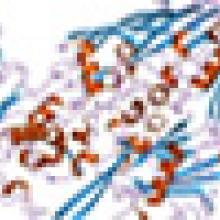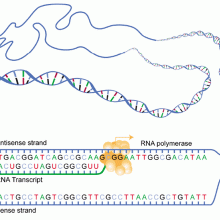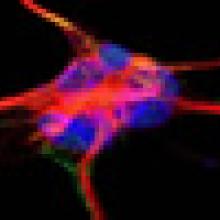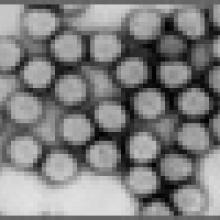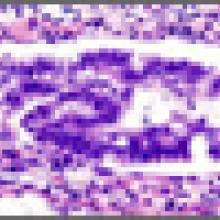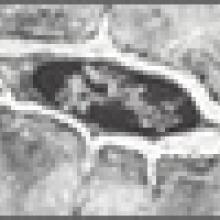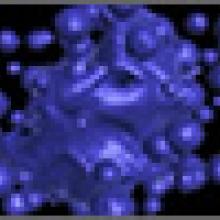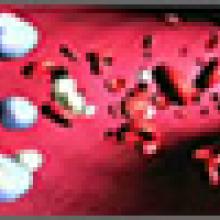Newsroom
Epgenetic changes are alterations of DNA and the DNA packaging proteins (histones) that can alter the way our genes are used without directly changing the DNA sequence itself. A common epigenetic change is the addition of a small chemical group (methyl group or CH3) to cytosine bases (the C in our… more
A Dutch study of 562 melanoma skin cancer survivors showed that women are more significantly affected by having had the disease. Women reported more extreme impacts, both positive and negative. They were also more likely to be worried about exposure to UV radiation and were more likely… more
The human T-cell lymphotropic virus 1 (HTLV-1) is a human retrovirus that causes leukemia. New research has helped to define exactly how the virus is able to take over normal cells. The virus produces a protein (p30) that binds with several key cell regulators (ATM and REGγ). ATM… more
A study of 59 breast cancer survivors showed that they were more likely suffer falls than women who had not had breast cancer. The researchers tested the women and found that they had altered balance and some changes to their visual perception. The differences are likely to be due to… more
Genetic damage is critical in the development of cancer. A new review suggests that there is more than one way that damaged DNA can cause problems. The first is when altered DNA is 'read' (transcribed) correctly but actually encodes the wrong thing. It would be as if the word 'CAT… more
The spread (metastasis) of cancer to distant locations is responsible for about 9 out of 10 cancer deaths. It is very important that we understand how and why a cancer spreads to particular locations. New research shows that tumors can prepare a site for metastasizing cells before the… more
Cancer treatments can cause fertility problems, a particular concern for young patients. A new study with monkeys (Rhesus macaques) showed that pre-treatment of females with chemicals that prevent cell death can prevent the infertility caused by radiation. The monkeys were given sphingosine-1… more
Because viruses are able to enter and kill cells, they are being actively examined for their potential to treat cancer. Viruses that grow in cancer cells but do not harm normal cells have been developed and several are being tested in clinical trials against a variety of cancers. … more
There is good evidence that, at least in some cancer types, not all cancer cells are equally able to divide and form tumors. The select cells that acts as the driving force in the development of cancer are known as cancer stem cells (CSC). Evidence suggests CSC are responsible for… more
Exposure to radiation therapy for head/neck cancers has been associated with a significantly increased risk for hearing loss. A study that compared 141 patients with 141 people who were not treated for head/neck cancer found that the patients were more likely to have hearing loss. Those… more
Ovarian cancer (OC) is the most lethal gynecologic cancer. Much of the death seen is due to the direct spread of organs in the abdomen. One of the changes that make cancer cells more likely to spread (metastasize) is a change known as the epithelial-to-mesenchymal transition (EMT… more
A study of about 800 men showed that treatment with as little as 6 months of anti-androgen therapy was able to reduce the spread of prostate cancer and increase survival of treated patients. Three months of treatment also showed some impact but was not shown to be beneficial in terms of… more
Vitamins, including folate (often as folic acid) are increasingly consumed in supplement form. Results of studies of the role of supplementation with folic acid in cancer development are conflicting. In a recent study, researchers examined whether maternal consumption of folic acid… more
Bone metastasis occurs in many different types of cancer and can lead to pain and bone weakness. New research has determined that a signaling pathway known as the 'Notch' pathway is involved in activating bone-destroying cells (osteoclasts) and causing the production of proteins that enhance… more
Resveratrol is a chemical found in wine that has beens shown to have positive effects on cardiovascular health. Resveratrol has also been studied for its ability to help prevent and treat cancer. New results indicate that resveratrol can enhance the effects of the anti-cancer drug… more
Pancreatic neuroendocrine tumors (panNET) are among the rarest forms of pancreatic cancer, accounting for only about 2% of reported cases. In general, the prognosis for pancreatic cancer is poor, but new research out of the University of Texas M.D. Anderson Cancer Center indicates that the drug… more
Hypoxia is a condition where an area of the body has a lower-than-normal level of oxygen. Almost every solid tumor has a hypoxic region. Because hypoxic areasa are not supplied with blood, it difficult to administer effective treatment. The fact that hypoxia is so rare in normal tissue,… more
Global cancer rates are increasing, and in 2008, over 12 million new cases of cancer were diagnosed. The American Cancer Society has recently released their newest collection of facts and figures about global cancer. The file is freely available for download.
A group of Finnish researchers have shown that it is possible to kill tumor cells that are moving through the lymphatic system. By using a light activated chemical, the researchers destroyed the lymphatic vessels carrying the cancer cells, reducing the spread of cancer in animal models.
Chemotherapy is an effective treatment for many types of cancer, but the very factors that make chemotherapy so effective can also result in serious side effects. For many years, the dosage of doxorubicin has been limited because of its damaging effects on the heart. Limiting the dosage, however,… more



